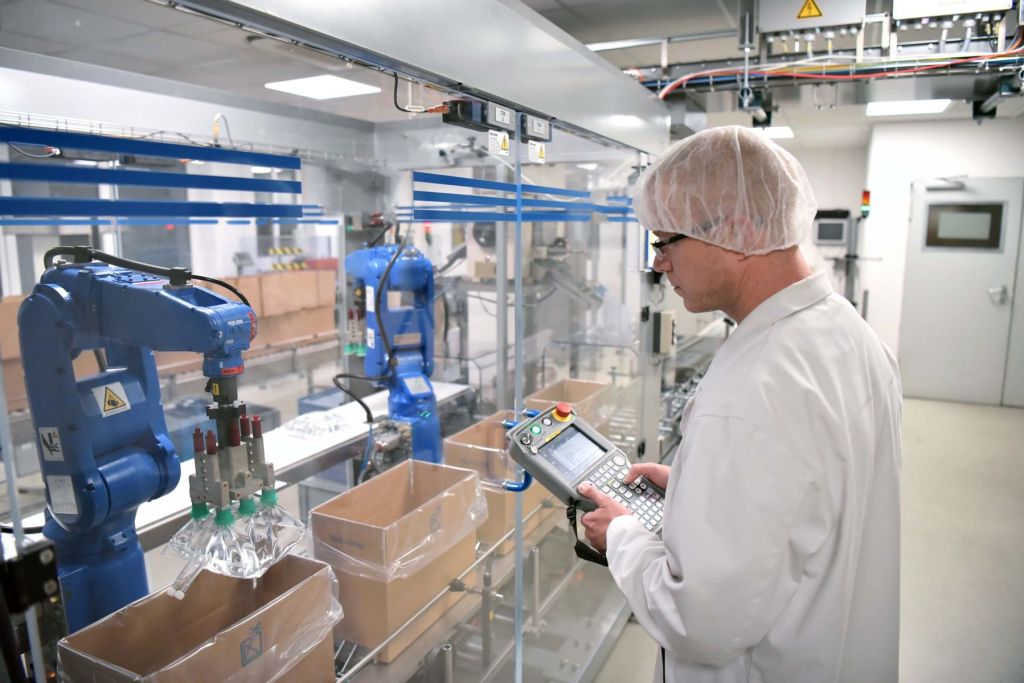Various pressures across the pharmaceutical industry mean that robots are more beneficial now than ever before. Challenges facing pharmaceutical manufacturers include the high cost of drug discovery, increasing demand for clinical trials, and rising global competition.

Robotic automation offers a way to improve the productivity of your operations in a way that is more flexible than conventional types of pharmaceutical automation. Collaborative robots are some of the most flexible robots available on the market and have opened up robotic automation to companies that would not have been able to access it in the past.
But, are collaborative robots right for your pharmaceutical company?
What tasks could you use a collaborative robot for?
And what’s the quickest way to get started?
Back in the 1800s, when all pharmaceuticals were dispensed by apothecaries, it would take several people to manufacture just one drug.
Since then, the pharmaceutical industry has slowly and gradually increased its efficiency by taking advantage of the latest developments in manufacturing technology. Now, one person could feasibly oversee the manufacturing of thousands of drugs per day.

Robotic automation is just the latest step in this journey for more efficient pharmaceutical manufacturing.
Collaborative robots provide extra benefits over other forms of automation because they apply to many parts of the manufacturing process that couldn’t be automated in the past.
Previously, only very high-volume processes could be automated. They required custom-built automation solutions that took weeks or months to deploy to a facility.
By contrast, collaborative robots can be deployed in a matter of days and can be used for smaller tasks with lower volumes.